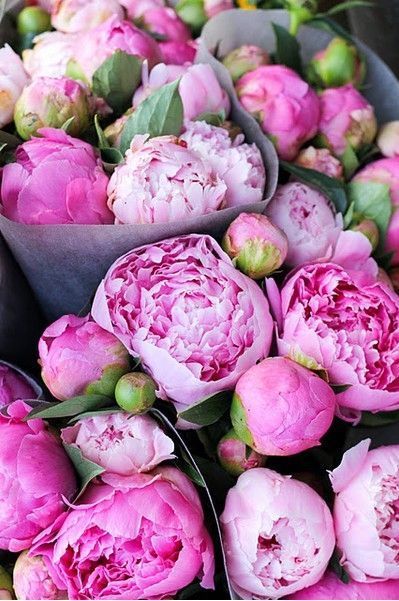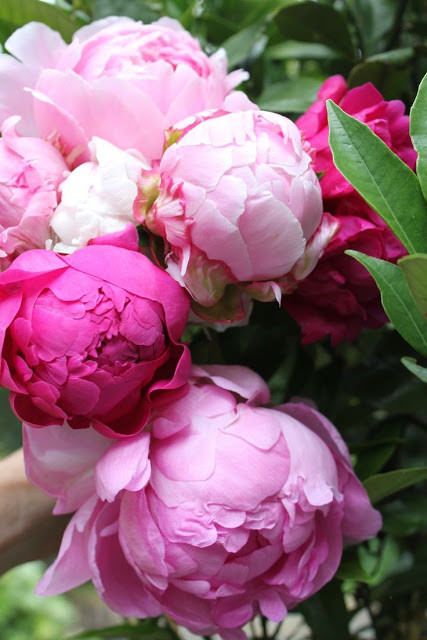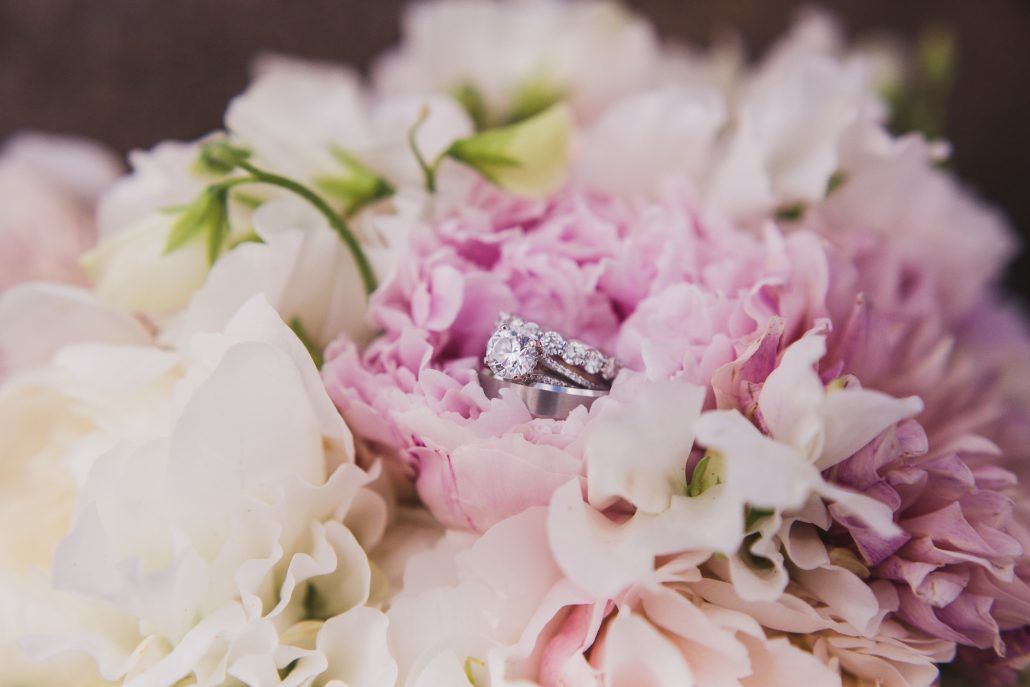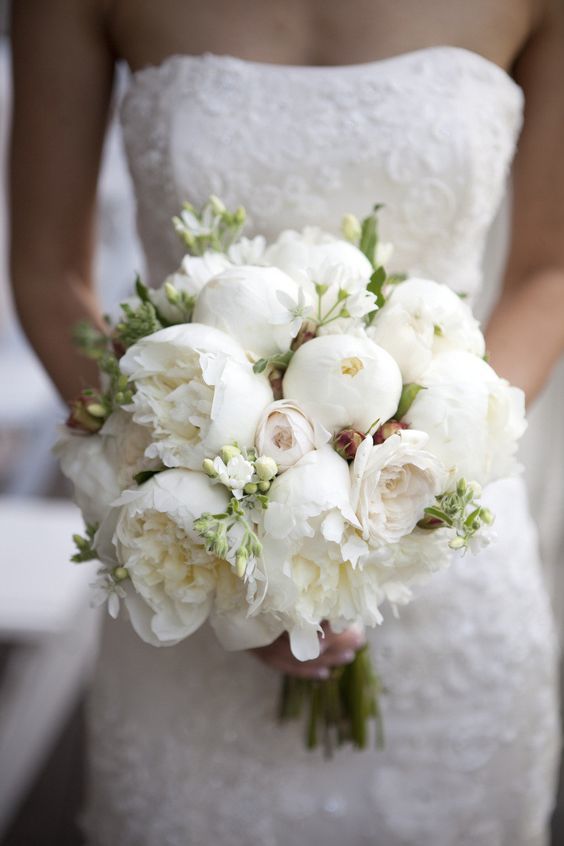Planning & Inspiration
Flower Feature: Peony
The peony is a gorgeous flower admired for its impressive bloom, lush petals, and unique texture. Mainly found in white, peonies also grow in an array of hues from light pink and purple to a deeper red.
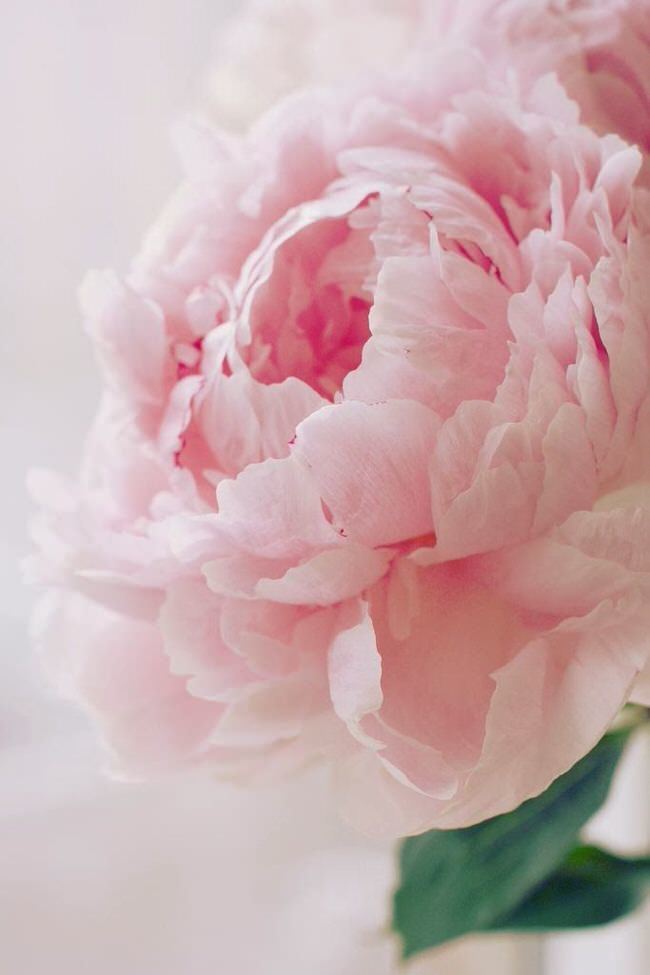
Single Pink Peony – Perfect Peonies – by Kathy Woodard – via The Garden Glove.com
Nearly unrecognizable in the early bloom stage, the peony starts out as a tightly condensed flower bud. Once the bud is cut and placed in warm water, the petals begin to open up. It continues to expand until becoming this elaborate, beautiful flower full of color, texture, and dimension. Though it looks delicate, the peony in full bloom is prized for its sturdy foliage and low maintenance care.
- Vibrant Pink Peonies – via Pinterest.com
- White Peonies – Blooming – via Pinterest.com
- Purple Peonies – via Pinterest.com
A particularly old genus and highly valued throughout the world, peonies hold significant symbolic and mythological meaning. In wedding practice, the peony represents a happy marriage, wealth, romance, and honor, making it a perfect flower for decor, gifts and offerings.

Fully Opened Pink Peony – Perfect Peonies – by Kathy Woodard – via The Garden Glove.com
Peonies are one of the oldest species of flowers, dating back to 1,000 B.C with origins in Asia, specifically China. A traditional floral symbol of China, the bloom is referred to as “the king of flowers.” Representing riches and honor, it is symbolically used in Chinese art. In addition to its beauty, the peony was valued for its medicinal properties. Roots and seeds were said to cure over twenty different illnesses, including teething pain, snake bite wounds, and epilepsy. Once the flower became known in the Americas, it was imported for spring and summer weddings of the wealthy.
- Pink Peonies – via Pinterest.com
- Bursting Pink Peony – Perfect Peonies – by Kathy Woodard – via The Garden Glove.com
There are two common myths relating the peony to Greek mythology. The first myth states that the peony was named after Paeon, the Greek physician of the gods. Paeon was a student of medicine under Aesculapius, and used the peony root to heal Pluto. Once Aesculapius found out, he became enraged with jealousy and tried to kill Paeon. To save Paeon’s life, Pluto transformed him into a Peony flower. Pluto’s act bestowed the flower with compassionate meaning, elevating it to be respected and praised by all. The second myth ties the peony to a nymph named Paeonia. She was beautiful and attracted the attention of Apollo. Upon learning that Aphrodite was watching, Paeonia became bashful and turned bright red. This angered Apollo. So the God turned Paeonia into a red peony, and the flower became a symbol of bashfulness in the flower kingdom.
Peonies are a beautiful bloom. Working with them in wedding arrangements requires thought and care as you want them to open up the perfect amount on the day of the wedding. To avoid browning, try to use the flowers when they are in season (April through June) and avoid taking them out of water too early. Available in a variety of colors, they look lovely on their own or as a perfect complement to other blooms. As a flower feature for your wedding day, this one-of-a-kind flower looks extraordinary in bridal bouquets and centerpiece arrangements.
- Mixed Metals Wedding – La Jolla – California – Peony Wedding Cake – Photo by Katie Nicole Photography – via Ruffled Blog.com
- Marissa & Chris – Oak Tree Country Club – Peony Shot – Photo by Anna Lee Media
- White Peony Bouquet – Napa Wedding – Silverado Resort – Catherine Hall Studios – via Style Me Pretty

